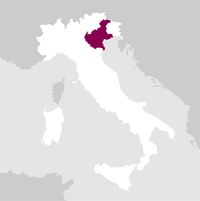Description
Recioto della Valpolicella is a sweet wine with an intense garnet red colour. The grapes of this Recioto come from a dedicated company's vineyard in the heart of the classic Valpolicella area. The word ‘Recioto’ comes from “recia” in the Veronese dialect, meaning the ear. It refers to the small wings or little side bunches that crown the main cluster. In the past, these were considered the part of the cluster with the highest quality, especially in a cluster selected for its quality and therefore more suitable for withering.
Awards
Details

Perfume

Color

Taste
Serve at:
14 -16 °C.
Longevity:
10 - 15 years

Pairings
- Start up year: 1960
- Oenologist: Alberto Zenato
- Bottles produced: 2.000.000
- Hectares: 95
1960 – San Benedetto di Lugana. It’s here that the heart of Sergio Zenato started to beat. His story is made of passion and hard work; a deep connection to his land and his people; entrepreneurial ability and openness to innovation and new vinification techniques and investment in native grape varieties.
A story that stretches from the banks of Lake Garda to the hills of nearby Valpolicella where the estate’s reds are born from sunny vineyards of Corvina and Rondinella in Costalunga in Sant’Ambrogio commune. Read more


| Name | Zenato Recioto della Valpolicella Classico 0.5L 2019 |
|---|---|
| Type | Red dessert wine dessert wine |
| Denomination | Recioto della Valpolicella DOCG |
| Vintage | 2019 |
| Size | 0,50 l |
| Alcohol content | 14.0% by volume |
| Grape varieties | 80% Corvina, 10% Oseleta, 10% Rondinella |
| Country | Italy |
| Region | Veneto |
| Vendor | Zenato |
| Origin | Sant'Ambrogio di Valpolicella (Verona). |
| Climate | Altitude: 300-350 m. a.s.l. |
| Soil composition | Limestone, rich in skeleton and clay. |
| Cultivation system | Guyot. |
| Plants per hectare | 5,000. |
| Yield per hectare | 8,000 kg/hectare. |
| Harvest | By hand, between late September and early October with the selection of the best bunches. The grapes are put in the drying lofts until February where they lose about 50% of their weight. |
| Wine making | The dried grapes are destemmed and pressed, followed by a slow fermentation in contact with the skins for about 20 days. |
| Aging | In tonneaux for 24 months and in bottles for a further 12 months. |
| Allergens | Contains sulphites |





